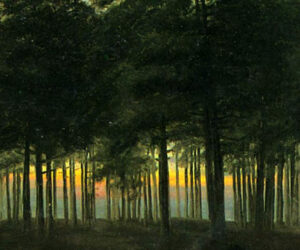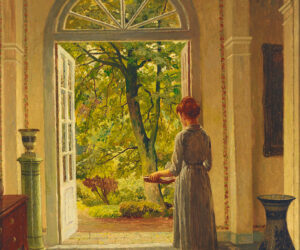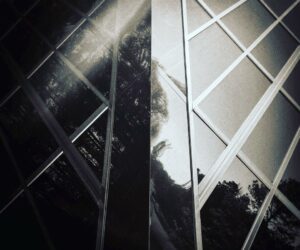
#ThreadTalk Flashback to the 1880s
1 – Welcome to #threadtalk! It's our first #threadtalkflashback & we're going to the 80s–the 1880s, that is.
(I turned 40 yesterday & I like symmetry.)🎂
So, let's find out what obnoxiously rich women were wearing in the West 140 years ago, shall we? Below: 1882, American.
2 – I first became aware of the 1880s through my unabashed love of Westerns. In particular, the 90s Young Guns films & "Whisky Jane" Greathouse's character in YG II.
Turns out those outfits are online! Designed by Judy L. Ruskin. Certainly colorful interpretations!
3 – The 1880s were the last gasp of Victoria–but gone are the hoop skirts.
Now dresses are characterized by structure: narrow waists, bustles, rigid lines, lots of pleating, drapery, and textiles that looked at home both on furniture and dresses. Below, V&A 1880(ish).
4 – The House of Worth, as we covered last week, was at its peak, alongside the House of Paquin & many other design houses.
Chemical dyes were all the rage, so you see vivid blues, mauves, greens, and yellows that look brilliant even today. Below: Met Museum, 1881.

5 – The Industrial Revolution has a massive impact on dressmaking, not just in steel boning, but in sewing machines, machine lace, and in production times. Worth begins pret-a-porter, and department stores rise up.
& magazines are BIG, big business. Catalogues, too (my faves).

6 – Let's indulge Natania a moment. Because I love catalogues.
Everything from buttons to bloomers in this 1881 catalogue page from the Young Ladies Journal. I love these little intimate peeks into what someone might have rifled through!

7 – My favorite thing about the 1880s is womens wear adopting lines traditionally reserved for men and really going to town. This began subtly at first, owing from designers like Worth going back to the 17th century for inspiration, but increased.
Below, 1880. Augusta Auctions.

8 – The 1880s also saw a rise in "sporty" attire, as we've seen before in our stripes edition. This one has the same "suit" look, but with some chintz to keep it comfortable with cotton. (As comfy as you can be with all those layers. 🥵 From the Met, ca. 1885, French.)

9 – Women wearing attire similar to their male counterparts, of course, caused somewhat of a stir. They even wore top hats, cravats, waistcoats, & sported trousers beneath their skirts. 🎩
So some sought a little extra embellishment. This blue lovely from the V&A is ca. 1885.

10 – Most of what I've shared so far has been "princess line" shape dresses. But by 1884, the BUSTLE comes BACK. By 1886, we get the mind-blowing "tea-tray supporting" structure like this number below from @Fashion_Museum — truly defies belief!

11 – Shawls were no longer an option when bustles got bigger, and mantles like this one had to be made to accommodate all that junk in the trunk. That pattern is something else, though. Peacock feathers yes please. 🦚🦚🦚 ca 1885, London.

12 – You could make bustles out of anything–sometimes they were quilted or stuffed; sometimes they were folded up bits of thick material.
High end ones could be made of steel and called things like PHANTOM. Here's an example from the 1880s.

13 – The 1880s, of course, rocked gowns. But we also need to talk about hats.
Fun fact about me: I have a large cranium. I was not made for this mass-market world. My kingdom for a good hatter.
Hats like this make me swoon. 👀 AT HER. She's from Paris, Modes de Louvres, 1885

14 – This second hat is a great illustration of that gender-norm shifting we're seeing in fashion. It's a straw top hat, but with just a sprig of "sweetness" and a jaunty angle.
Alas, we've lost hat culture somewhere along the way. More's our loss.

15 – As many of you pointed out in the Worth thread, Tissot really was one of the fashion chroniclers of the age, at least in terms of paintings.
The detail on The Ball, from 1880, is absolutely exquisite. Every pleat, every bit of lace, every petal.

16 – Speaking of fans, here's a lovely lace one. It's Irish lace, naturally, and tortoiseshell. From the Fan Museum. Fans were massively popular in the 1880s, and you can still buy some online if you'd like to collect them. Truly!

17 – Black also starts to show up more and more in the 1880s, and that always brings me all sorts of joy. This particular gown is a personal favorite from the Met Museum collection, & it dates from the first half of the 1880s. Black satin? Yes please.

18 – Thankfully, we also have photography in this era, & with fashion becoming more readily available, evidence of fashion beyond the white, rich monolith. This woman was photographed ca 1890 in Tallahassee, FL. So many wonderful details here, including her fan & watch.

19 – Another image from the same archive in Florida. Her name is Nellie Franklin. I think her dress is printed cotton, but I can't quite tell. Either way, dating from late 1880s as well, maybe 1890. I love the lapels. The gloves. The hat.

20 – The 1880s was a world of Sherlock & Holmes, Toulouse-Lautrec, the wonder of electricity, & the fabric industry poised on the edge of its modern age. Women were slowly gaining rights & the restrictive fashion of the period slowly ebbed away in the 20th C. (ca 1881, French)

21 – So a few more dresses, shall we?
If you're seeking contrast, this gown will do you well. From the tail end of the 1880s, made by Sara Mayer & A. Morhanger, Paris, it's figured silk overlaid with chiffon (hnnnng) & black machine lace. Likely half-mourning, but 100% gorgeous.

22 – We haven't had enough berry tones lately. I love the scalloped edge of the bodice, the gold detailing, the fringe, the gathered hips! Really, it's got everything you'd look for in this era! 1880, America. Belonged to Amelia Beard Hollenback (1844-1918).

23 – Want a little springtime joy? This early bustle baby reminds me of cherry sorbet and caramel. That gold damask contrast with the rippling taffeta is to die for. It's by Wechsler & Abraham, and dates from 1880, and is America.
24 – File under "I can't hate it." I just… I love it. I feel like we hate on colors we don't understand. But the ruching alone here deserves an Oscar for best supporting actress. Wool & silk! And look at those cuffs! 1881-83, British.
25 – Two words: POPPY MOTIF. I love orange and pink together & the draping on the front of this! All that brocade, too. Then you add the tiers? Lordy.
You're not supposed to lick dresses, I know this. But it seems like it would taste good. 1880s, via Augusta Auctions.
26 – And to finish things off, this deep blue, dreamy visiting dress from France in the latter bit of the 1880s. Because deep blue satin. And those alternating stripes. And the contrasting lace. And good heavens. Met Museum.

27 – A VERY short list of sources tonight.
https://fashionhistory.fitnyc.edu/1880-1889/
https://silhouettescostumes.com/the-eras-we-build/1881-1887/
https://lilyabsinthe.com/trending-for-october-1881/
28 – Thanks for sticking with me through an admittedly light-hearted #threadtalk. I'll be back next week with some hard-hitting fashion history!
Until then, question beauty relentlessly. And find joy in between the stitches. I hope you enjoyed your tour of the 1880s! Adieu!

Originally tweeted by Natania Barron (@NataniaBarron) on June 15, 2021.

















